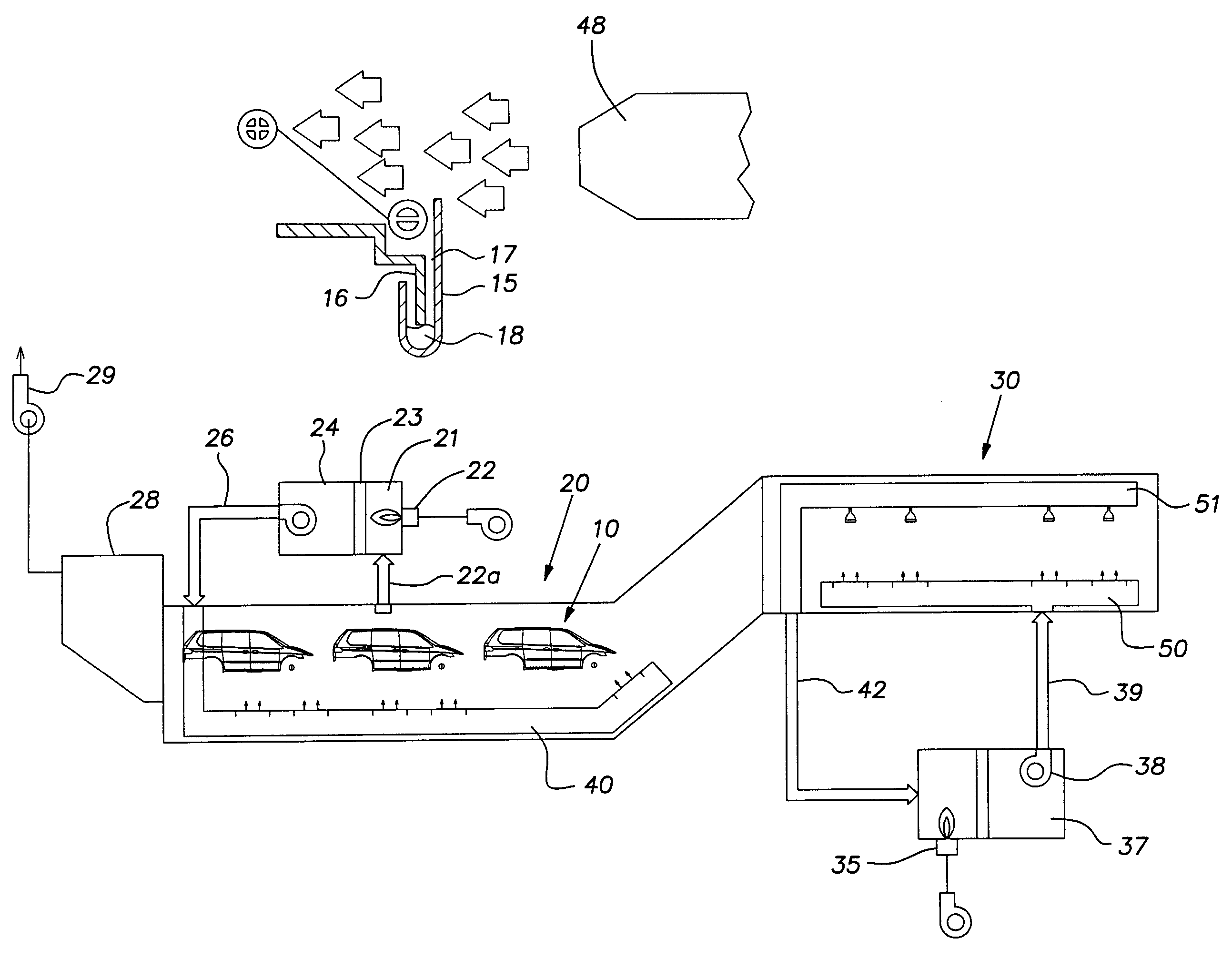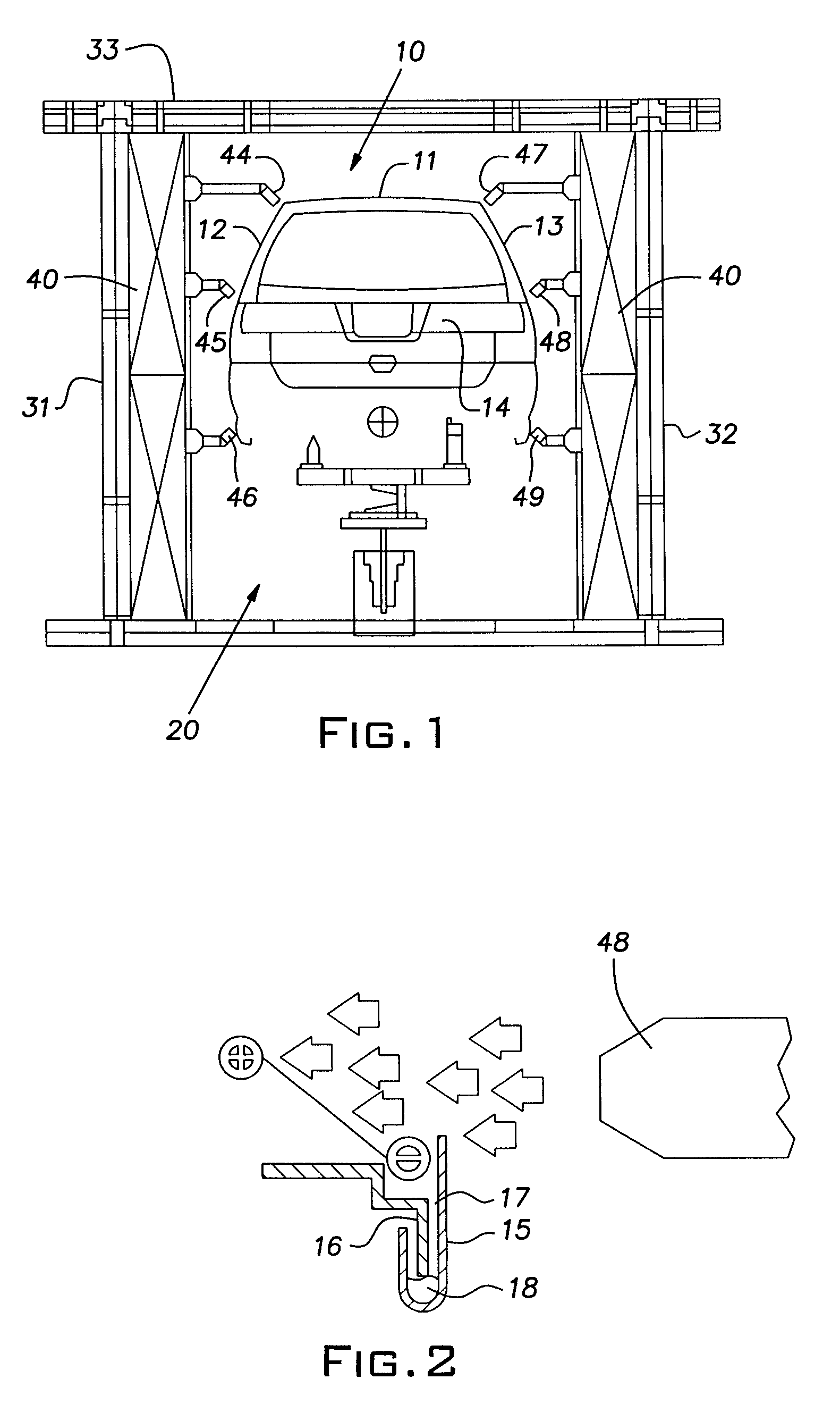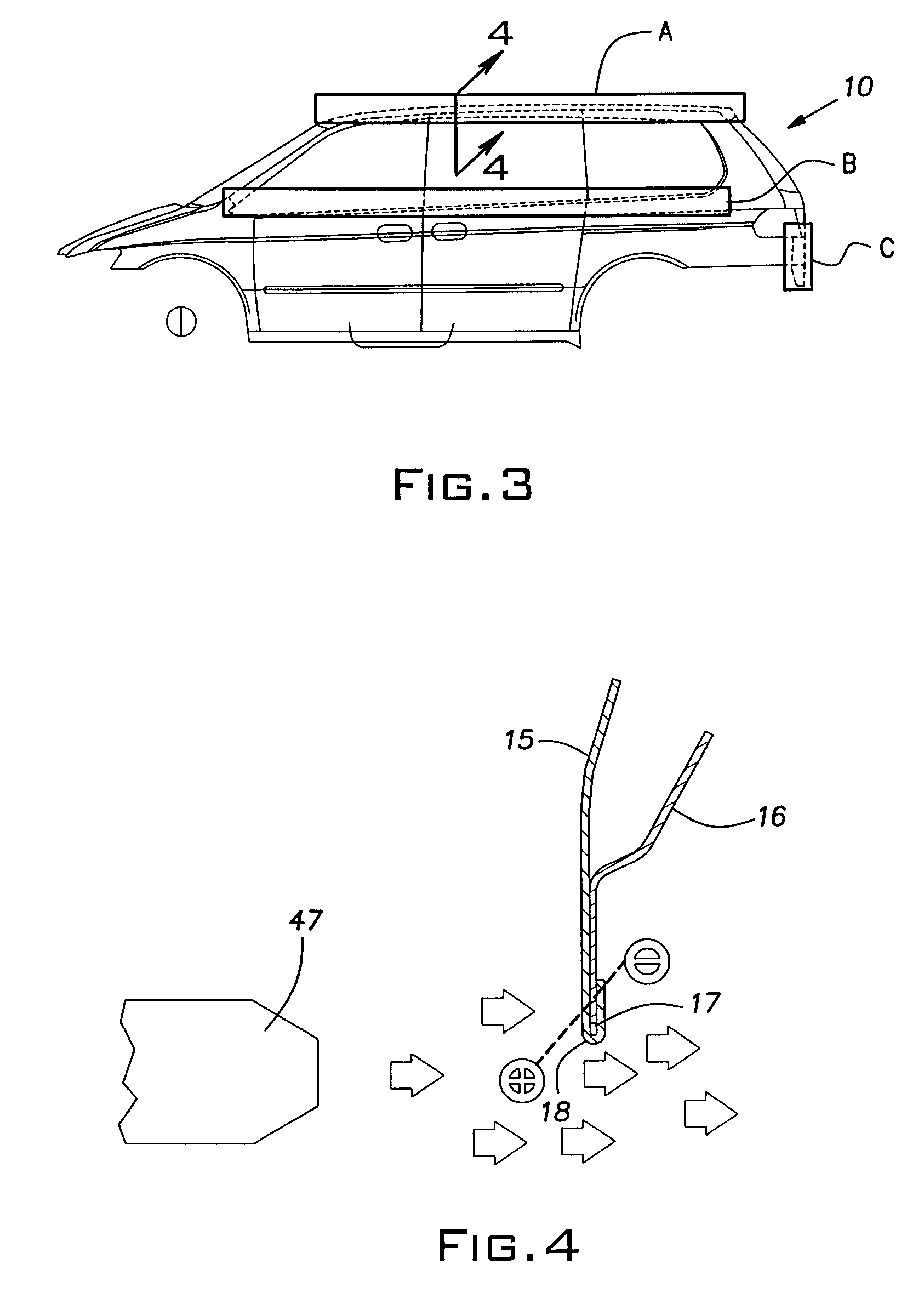Dehydration of body hem flanges
a hem flange and body technology, applied in the direction of lighting and heating apparatus, drying solid materials without heat, and combination processes, etc., can solve the problems of liquid contaminants on the panel surface, partially exposed, and often incomplete drying process, so as to reduce pressure
- Summary
- Abstract
- Description
- Claims
- Application Information
AI Technical Summary
Benefits of technology
Problems solved by technology
Method used
Image
Examples
Embodiment Construction
[0021]Referring more particularly to the drawings and initially to FIG. 1, there is shown a vehicle body assembly 10 fabricated from sheet metal and being conveyed through a pre-heating tunnel 20, adapted to perform the method of the invention in order to cause evaporation of liquid contaminants. The method of the invention is used simultaneously with the pre-heating of the body assembly 10, as is necessary prior to heat treating of the body assembly, as is well known in the art.
[0022]In this regard, FIG. 5 schematically shows both the pre-heat tunnel 20 and a downstream heat-treating tunnel 30. After being dipped in a tank containing, for example, a cleaning solution, the body assembly 10 (which is sometimes referred to as a ‘white body’ by those skilled in the art) is carried into the pre-heat tunnel 20. In the pre-heat tunnel 20 the body assembly 10 is gradually heated to an elevated temperature before being introduced into the heat-treating tunnel 20, in which the body assembly ...
PUM
 Login to View More
Login to View More Abstract
Description
Claims
Application Information
 Login to View More
Login to View More - R&D
- Intellectual Property
- Life Sciences
- Materials
- Tech Scout
- Unparalleled Data Quality
- Higher Quality Content
- 60% Fewer Hallucinations
Browse by: Latest US Patents, China's latest patents, Technical Efficacy Thesaurus, Application Domain, Technology Topic, Popular Technical Reports.
© 2025 PatSnap. All rights reserved.Legal|Privacy policy|Modern Slavery Act Transparency Statement|Sitemap|About US| Contact US: help@patsnap.com



